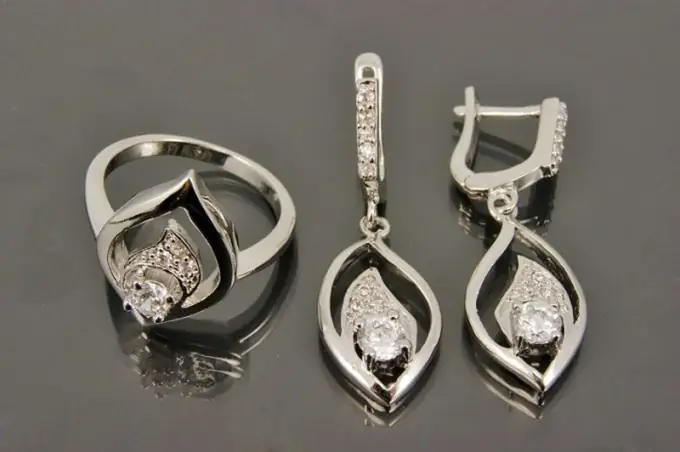Cubic zirconia is a synthetic stone obtained in the 60s of the 20th century by scientists of the Physics Institute of the USSR Academy of Sciences (FIAN). Outwardly, it is very similar to a diamond and, in fact, is a much cheaper substitute.

Instructions
Step 1
Cubic zirconia is very beautiful and delicate. Looking at its dazzling radiance, many are surprised that it is not a natural, but an artificial stone. Although colorless cubic zirconias are most often seen in jewelry, in fact, there can be completely different shades. The color of the stone depends on the impurities used in its manufacture. So there are also pink, bright red, purple and green cubic zirconias. They are all as beautiful as natural stones. There are cubic zirconias that can change their color, depending on the lighting.
Step 2
In 1969, a natural analogue of artificial cubic zirconia was discovered on the shores of Lake Baikal. It has an orange color, however, in the process of processing the stone, sodium or manganese oxides are often added. Depending on the quality of the impurities, it takes on different colors and shades.
Step 3
Since the main raw material for the production of cubic zirconia is zirconium oxide, it is sometimes called zircon. However, this is completely wrong. In fact, zircon is a yellow-brown mineral that has nothing even remotely to do with cubic zirconia. The highest quality cubic zirconias are made using a technology that was developed back in the USSR. Today, there are much less costly methods of obtaining stones, however, their quality is becoming much lower.
Step 4
Since the physical properties of cubic zirconia (in particular, hardness) are close to those of natural diamond, it is used not only in jewelry, but also in optics, medicine and radio engineering. True, for the needs of industry, only 2% of cubic zirconias are synthesized, the rest is still used to make jewelry.
Step 5
Cubic zirconia is often called the stone of loneliness. In addition, it is considered a real imitation of a diamond, although, of course, any jeweler can easily distinguish between them. In addition to the different physical and optical properties, the cut of the stones also differs. The edges of the cut cubic zirconia are slightly rounded, which should not be the case for a diamond. Despite the fact that cubic zirconia is a synthetic and not a natural stone, certain healing and magical properties are attributed to it. It is believed that it increases vitality and is able to heal the human body, drawing out everything unnecessary from it, including various tumors. They say that cubic zirconia is an empty vessel that everyone can fill with their own energy and positive emotions. In addition, it symbolizes the key to the doors leading to the achievement of happiness and success.







